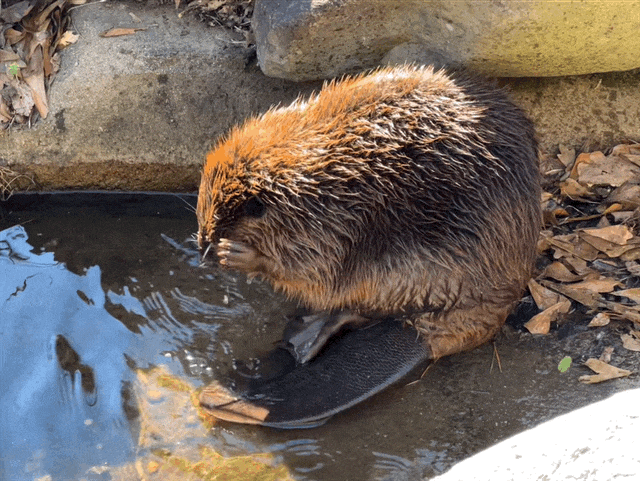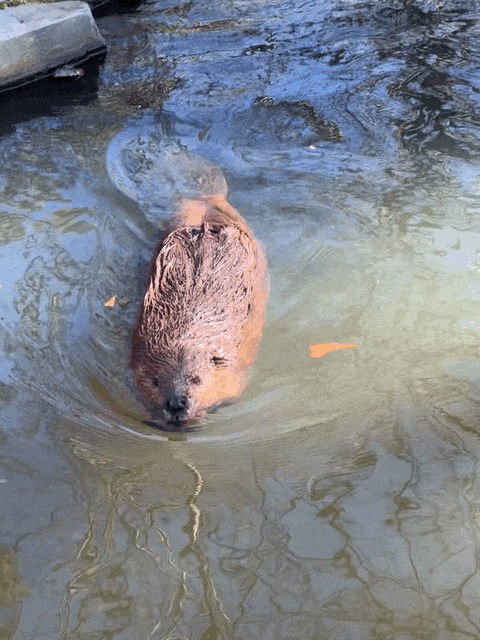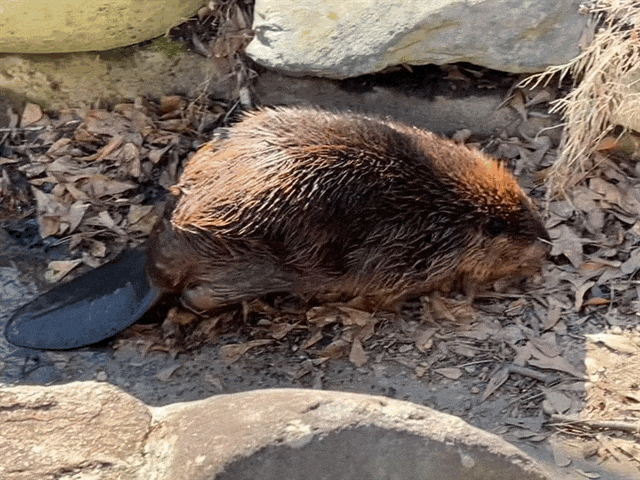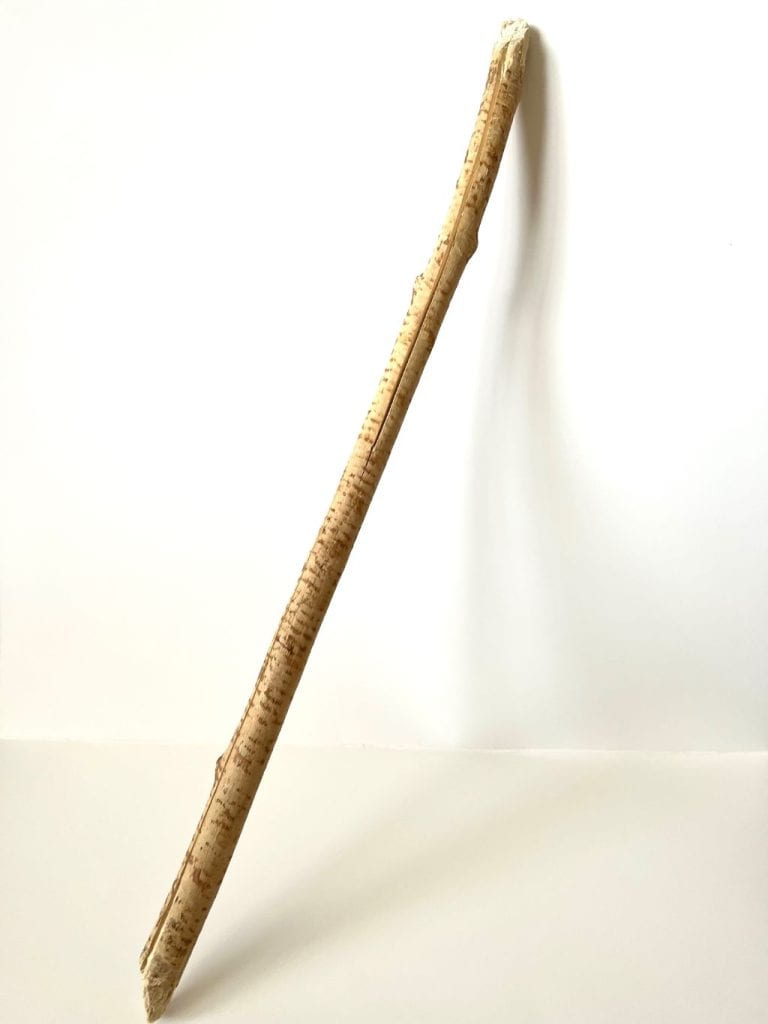Beavers – Natural Engineers
Beavers, the largest rodent in North America, are a keystone animal in a woodland ecosystem and amazing natural engineers! They were once hunted to near extinction for their pelts, meat, and castoreum, but are no longer considered endangered.
When I visit the Chattahoochee Nature Center, I never miss the beaver habitat. When possible, rescued animals that are brought to the on-site CNC clinic are rehabilitated and released. “On average, the Wildlife Department receives an average of 500 injured raptors, reptiles, and amphibians annually.” Animals that cannot be set free are used for educational purposes. Although primarily nocturnal, this beaver was active during my recent visit.
What a perfect shape for swimming! Beavers are semi-aquatic, meaning they spend their lives in and out of the water. They can hold their breath for up to 15 minutes while under water.
Did you know that beavers’ larger hind feet are webbed and used for swimming, but their front feet are hand-like and used to manipulate objects? Beavers are herbivores and weigh up to 70 pounds.
The beaver’s thick fur repels water. Transparent eyelids allow them to see underwater and their nostrils and ears are closeable. Beavers remain active even on cold days and do not hibernate.
A beaver’s flat tail acts as a rudder when they swim. They will also slap their tail to warn of danger.
Like other rodents, beavers’ front incisors never stop growing, so they must chew to control their growth. Teeth are orange because of the iron in them. “Beaver chew” are sticks left behind after the beaver has eaten the bark and leaves. The sticks are used to make rustic furniture.
Click here to view full screen.
Click here to view full screen.
Click here to view full screen. I found this film fascinating! Before you build your dam below, listen to the plan the beavers use in this film. I have a new appreciation for the simile, busy as a beaver.
Gail Gibbons has written many non-fiction books for children.

Five Busy Beavers is a fun rhyme with predictable language that introduces the concept of subtraction.
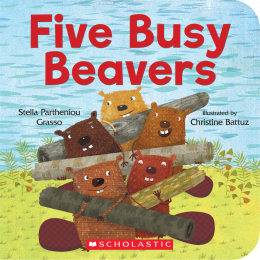
Go outside and task your child with designing and building a dam. Use a shallow plastic tub. Then collect mud, leaves, rocks, moss, twigs and any other natural materials to construct a dam across the tub. Pour water on one side of the dam. Does your dam prevent the water from moving to the other side? Add some plastic pond animals to your ecosystem. Remember that beavers don’t live in their dams. They are social animals and build homes called lodges.
Do you have a dam near your home? This dam created a pond in my neighborhood. Use your discussion of beavers to kickstart a study of dams. Discuss how they are constructed and their purposes. Locate famous dams.
When you visit Yellowstone, be sure to see the beavers. Click here to learn more.




